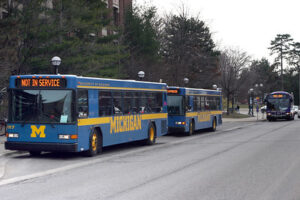A shocking side effect of the COVID-19 pandemic emerged in the September jobs report. According to the Bureau of Labor Statistics, the US workforce lost more than a million workers in September. 865,000 of them were women. One month. Nearly one million women. Used to be employed. Now, not employed. As surprising as the numbers are, they also reveal an opportunity for community colleges.
The pandemic has had a disproportionate impact of job loss on women – especially Latinas and Black women. They account for 44% of the job losses for women. A higher proportion of minority women work in service occupations – restaurants, hotels, hospitals and housekeeping – where “work-from-home” is not an option. When children returned to school in August and September – many women could not both supervise their children during the school day and continue to work. So they quit their jobs.
Another sector where women were hard hit is education. The September jobs report showed a contraction of 216,000 in public-sector employment. Much of that loss is attributable to education, where women occupy most positions.
The September jobs report shows that the simple act of returning children to school during the pandemic erased all of the employment gains women have made in the last decade. And the news could get worse for women as the school year goes on. A report by Lean In studied more than 40,000 employees at more than 300 companies. Results showed that 25% of female employees have considered leaving the workforce either partially or altogether due to COVID-19.
Leveraging the opportunity to return to the workforce
When the pandemic resolves, which could be 1-2 years into the future, providing education and re-training opportunities for women will be more important than ever before. Ensuring that these workers have adequate skills to rejoin the workforce is essential to increasing their labor force participation.
Academic programs that open employment opportunity for women re-entering the workforce could attract more female students. It could also help employers address their need to add more female workers to their payrolls.
Designing academic programs simply isn’t enough, though. In addition, WCC must find creative ways to lower or fully eliminate the cost of attendance. For many of these women, their children’s need fueled their decision to leave the labor force. The loss of household income for these displaced workers may be significant. They may lack the financial resources they need to go back to school. Ultimately, it may mean that these women never have the opportunity to reach their full economic potential.
The September jobs report is clearly a disaster for working women. At the same time, it poses an opportunity that a well-run community college should be able to leverage.
Photo Credit: Geoff LMV , via Flickr























